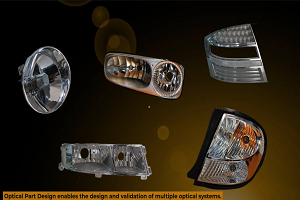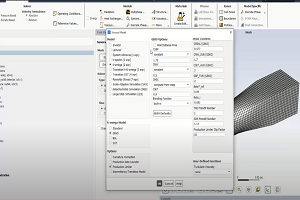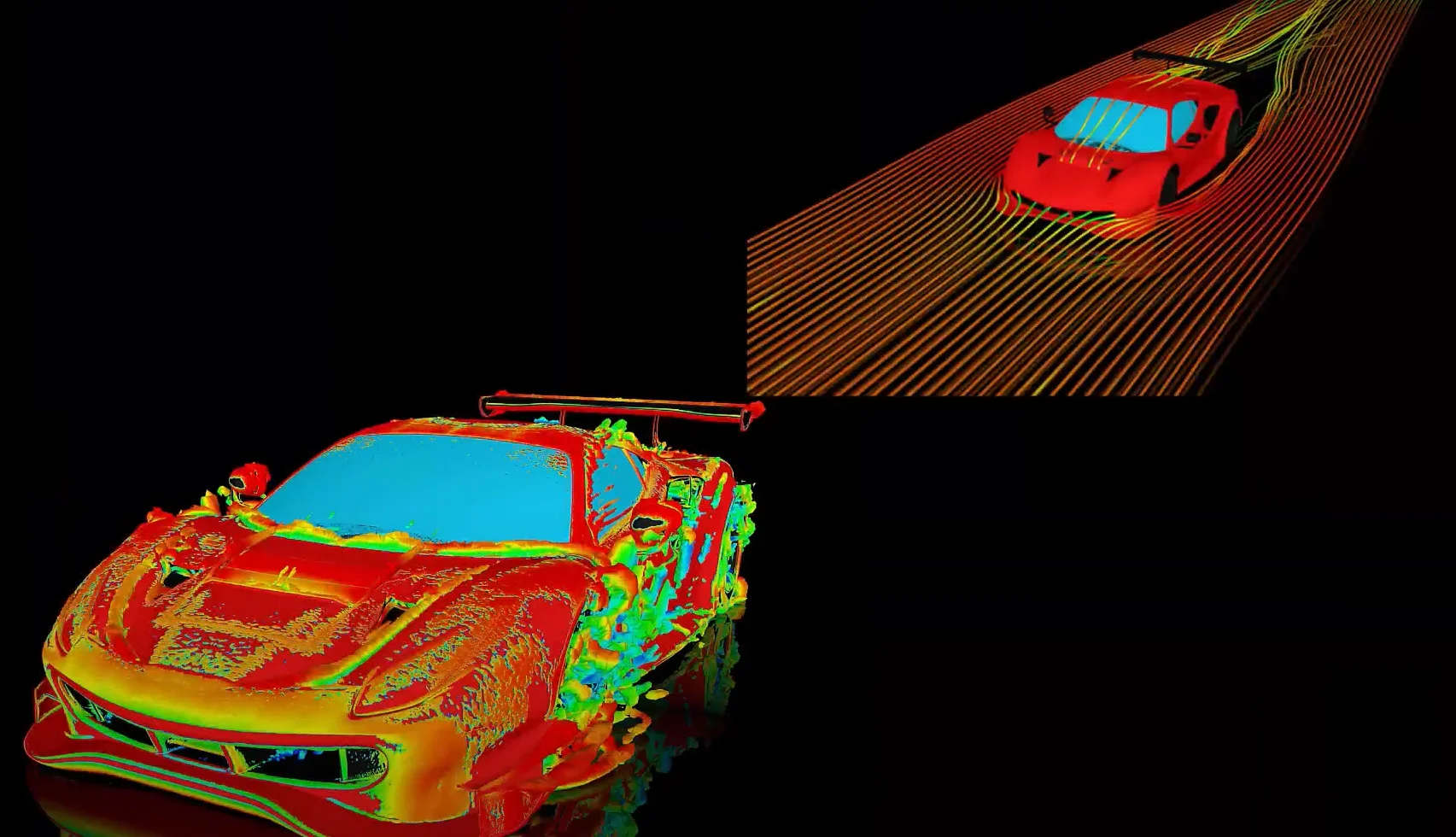-
-
January 25, 2023 at 7:17 am
 FAQParticipant
FAQParticipantThe heat transfer coefficient is a characteristic of the flow. It is used to measure the ability of a flow to convect energy from walls. HTC= qwall/(Twall-Tref) For forced convection flows, HTC is traditionally conceived to be a function of velocity (flow rate), fluid properties, and geometry. i.e. NU = HTC/KL = NU(Re,Pr); it is not thought in terms of wall boundary conditions. This is true only if Tref is a bulk (or “mixing cup”, or mass-averaged) fluid temperature. For constant properties, by this definition, HTC becomes independent of thermal field. There are at least 3 methods in calculating HTC in Fluent. The first two use heat flux to get HTC, which requires a converged thermal field. In these two methods, HTC is determined by measuring the thermal field – by measuring heat flux. The 3rd method does not require to run the thermal field. 1. HTC=qwall/(Twall-Tref) Tref is defined by the user in the Report->Reference Values. This HTC is a Fluent variable; it can directly be selected under ‘Wall Fluxes’. This cannot be used if the bulk temperature changes along the flow direction, which gives it a limited usage. For example, it can’t be used for flow inside a heated duct or a pipe, because the bulk temperature changes along the pipe. In these cases, this HTC becomes a fictitious value; it may be good only for that reference temperature. If it is going to be applied as boundary condition for another simulation or FEA analysis, it may only be used with that reference temperature – a fixed thermal boundary condition. But it can be used for flow over a flat-plate, where the reference temperature far away from the plate remains unchanged in the flow direction. (For flat plate, the bulk temperature turns out to be temperature at infinity.) 2. HTC = qwall/(Twall-Tcell) In this definition, Tcell is the adjacent cell temperature. This definition is much better than a fixed reference temperature for most complicated geometries. In most cases, if wall functions are used and Y+ is obeyed, the adjacent cell temperature becomes close to the bulk temperature. (Note that when using standard wall functions, the Y+ at adjacent cell, ideally, should be between 30 and 60, mostly depending on the application.) This definition cannot be applied for two-layer model where the first node is too close to the wall. In this case the adjacent cell temperature will be much higher than the should-be-used bulk temperature. This will over-predict HTC. In practice, one may apply a constant wall temperature – value that is close to actual value, and a fluid inlet temperature. Converge the thermal and the flow field and then extract this HTC. To get this HTC in Fluent, you can make a Custom Field Function (CFF) of the following existing Fluent Field variable HTC = (‘Total Surface Heat Flux’ – ‘Radiation Heat Flux’)/(‘Wall Temperature (outer surface)’ – ‘Static Temperature’). You can perform contour plot of this CFF without the node values. Without the node value ‘Static Temperature’ will grab the adjacent cell temperature. Note that in order to use q”/(Twall – Tcell), there has to be sufficient flux through the wall. 3. Another method to obtain HTC is to get it directly from wall functions. Note that this method can be used even if there is no flux through the wall! For segregated solver, incompressible flow, and Ystar > Ystar_T: Tstar=(Twall-Tcell)*Density * cp * Cmu^.25 * kcell^.5/qwall = Prt * [1/k *ln (E * ystar) + P] HTC = qwall/(Twall-Tcell) = Density * cp * Cmu^.25 * kP^.5 / {Prt * [1/k *ln (E * ystar) + P]} For segregated solver, incompressible flow, and Ystar>Ystar_T: Tstar=(Twall-Tcell)*Density * cp * Cmu^.25 * kcell^.5/qwall = Pr * ystar HTC = Density * cp * Cmu^.25 * kP^.5 / (Pr * ystar) where P = (pi/4)/sin(pi/4) * (A/k)^.5 * (Pr/Prt – 1) * (Prt/Pr) ^.25
-


Introducing Ansys Electronics Desktop on Ansys Cloud
The Watch & Learn video article provides an overview of cloud computing from Electronics Desktop and details the product licenses and subscriptions to ANSYS Cloud Service that are...

How to Create a Reflector for a Center High-Mounted Stop Lamp (CHMSL)
This video article demonstrates how to create a reflector for a center high-mounted stop lamp. Optical Part design in Ansys SPEOS enables the design and validation of multiple...

Introducing the GEKO Turbulence Model in Ansys Fluent
The GEKO (GEneralized K-Omega) turbulence model offers a flexible, robust, general-purpose approach to RANS turbulence modeling. Introducing 2 videos: Part 1 provides background information on the model and a...

Postprocessing on Ansys EnSight
This video demonstrates exporting data from Fluent in EnSight Case Gold format, and it reviews the basic postprocessing capabilities of EnSight.

- Defining heat transfer coefficient (HTC)
- How to use Thin Walls with Thermal boundary conditions?
- ANSYS Fluent Student: Conjugate Heat Transfer in a Heat Sink
- Thermal Analysis of a Radiator Using Ansys Fluent
- In ANSYS Fluent, when the energy equation is enabled and viscous heating is enabled, must pressure work also be turned on?
- How to add comments to journal file so that I will know what each entry does?
- Simulating Battery Pack Cooling System Using Ansys Fluent
- How to solve the warning: “Warning: zone of type interior found between different solids!”
- ANSYS Fluent: Overview of the Mapped Interface Technique for CHT Simulations (18.2)
- What is the difference between internal and external emissivity?

© 2026 Copyright ANSYS, Inc. All rights reserved.

